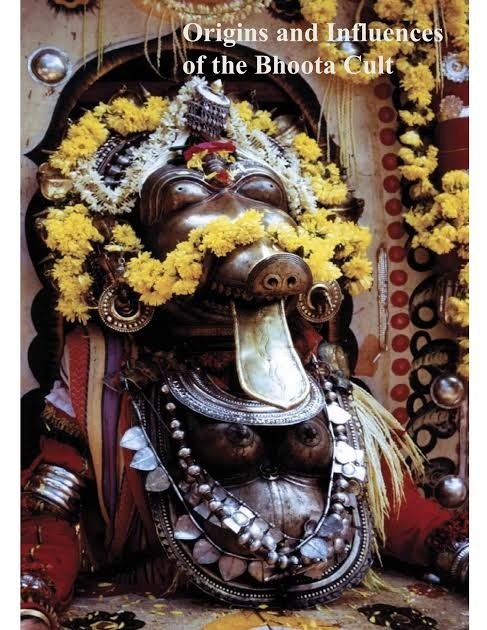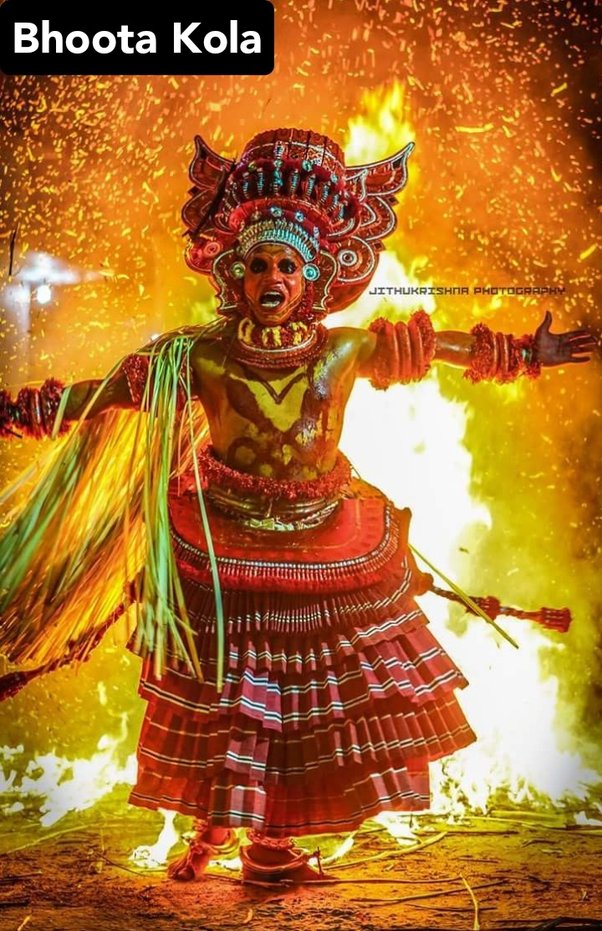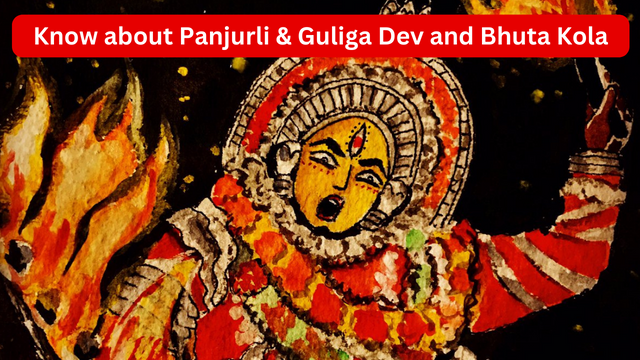These days there is a lot of buzz about a movie “Kantara” and more than that curiosity is there to know about the deity “Panjurli Dev” featured in that movie. Panjurali Dev is worshiped in South India, especially in parts of Karnataka and Kerala. His legends are very popular there, but very few people know about him in other parts of the country. So let’s know something about this.

Varaha avatar of Lord Vishnu
The word Panjurli is a corruption of the Tulu word “Panjida Kurle”. In the Tulu language, it means “young boar”. It is somewhat similar to the Varaha avatar of Lord Vishnu. Among the Tulu people, also known as Tulunadu, Panjurali Deva is one of the most ancient deities. It is a belief that Panjurli Dev came to earth at the same time when food originated on earth for the first time, that is, at the beginning of human civilization.
Some scholars also believe that when humans learned to do farming, at that time wild boars (Varah) used to eat their crops to feed themselves. They mistook it for some divine power and started worshiping Panjurli Dev in the form of Varaha to protect their crops. Since then Panjurli Dev is being worshipped.
Even today, while worshiping Panjurli Dev, people perform a ritual called “Barne-Korpuni” where they offer food to the deity. In this practice, rice is kept in a bamboo vessel, and a lamp is lit in two pieces of coconut and placed in front of the Panjurli deity.
After this, a very ancient dance called “Bhuta Kola” is performed in front of Panjurli Dev. Kola means dance in Tulu language and Bhuta is a form of this dance. There are many other types of dance like Bhuta Kola. This dance goes on for a long time and when the person dancing gets tired, then people dedicate that food to Panjurli Dev. This is a kind of prayer made to them to protect their crops.
Story of Birth of Panjurli Dev
According to legend, a boar had five sons, but one of them was left behind as a newborn. He started suffering from hunger and thirst and stood on the verge of death. At the same time, Mother Parvati came there while visiting and she saw a newborn Varah baby, she felt pity for him and took him to Kailash. There she started following him like her own son.
Time passed and that child took the form of a ferocious boar. With time, his molars (teeth) came out, due to which he started facing a lot of trouble. To avoid that itching, he started destroying all the crops on the earth. Due to this, there was a shortage of food in the world and people were suffering from hunger. When Lord Shankar saw this, he decided to kill that boar for the welfare of the universe.

Shiva’s curse was boon for boar
When Mother Parvati came to know about this, she prayed to Mahadev not to take his life. At the request of the mother, Mahadev did not kill him but cursed him to go to earth by expelling him from Kailash. After saving his life, that boar prayed to Mahadev and Mata Parvati and then Bholenath ordered him to go to the earth in the form of divine power and protect humans and their crops there.
Since then that Varah started residing on the earth as “Panjurli” Dev and started protecting the crops on the earth. That’s why people started worshiping him like a deity. They are known by different names in different places in South India. Along with their names, their worship methods and forms are also different. In most of the places, he is shown in the form of Varaha but in some places, he is also shown as a man wearing a mask.
Sister of Panjurli dev
He has also been considered to have a sister whose name is “Kallurti”. There is a famous temple of these two in Bantwal taluka of Mangalore. It is believed that it is there that Kallurti meets Panjurli Dev and both of them are worshiped as siblings who are worshiped together as “Kallurti-Panjurli” deities. There is hardly any family in Tulunadu who does not worship Kallurthi Panjurali Dev.
Kallurthi Panjurli is considered by everyone as the head of their family. Whatever problem is there in the family, it has to be brought before these two and they both tell the solution of that problem. Whatever the solution, all the members of the family have to agree. It is believed that Kallurti Maa gives suggestions to find a solution to the problem and the final decision is taken by Panjurli Dev.
Guliga dev birth by Lord Shiva
Along with Panjurli Dev, there is also a description of another deity “Guliga” who is a fierce form of the deity. According to an ancient legend, once Mother Parvati brought ashes for Mahadev. There was a pebble in the ashes which Bholenath threw on the earth. From the same pebble, Guliga Dev was born in his fierce form. He asked Mahadev where should I go. On this, Bholenath sent him to Lord Vishnu. Lord Vishnu sent him to earth in the womb of “Nenulla Sanke”.
After nine months, Guliga Deva asked his mother which way should he come out. His mother told him to come through the same path from which all children come, but Guliga Dev did not do so. He tore open his mother’s belly and came out of it. They were extremely hungry so they started looking for something to eat. He was so hungry that he tried to eat Suryadev. Then he ate fish and drank the blood of animals, but even this did not satisfy their hunger. Finally, Lord Vishnu gave him his little finger to eat which satisfied his hunger.

Guliga dev is Shivganas
Guliga Dev is also considered one of the Shivganas and is also called Kshetrapal. According to a legend, once there was a war between Panjurli Dev and Guliga Dev that lasted for many days. Then Maa Durga stopped that war and ordered them both to live together. For this reason, even today Panjurli Dev and Guliga Dev are worshiped together. While Panjurli Dev is mild, Guliga Dev is fierce, but still, both of them live peacefully together.
Bhuta Kola
In the Tulu language, Bhuta means divine power and Kola means dance. It is also called Daiva Kola. The word “Daiva Nema” is also used with Bhuta Kola. It is believed that in Bhuta Kola where a spirit (Bhoota) enters the person performing that dance when the dancer is possessed by many spirits (Deva), it is called Daiva Nema.
The dance of Bhuta Kola is considered traditional. That is, this art goes on from generation to generation. A person who is an expert in the Bhuta-kola dance teaches it to his most capable child and then his son does the Bhuta-kola dance. For this, he needs to undergo rigorous training. Only that person is considered fit to perform the Bhuta Kola dance whose mind is pure and whose body a deva or ghost can enter during the performance of the dance.

